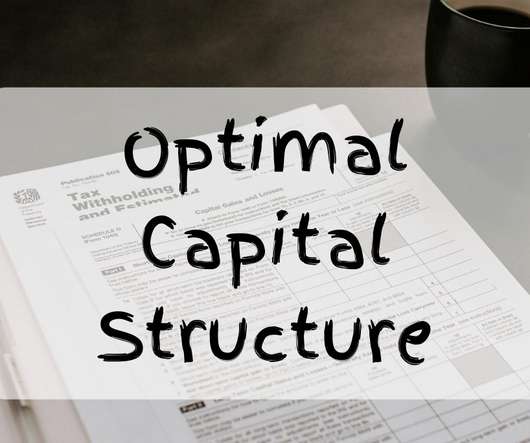The Bootstrapped Startup’s Guide to Debt Financing
Lighter Capital
JULY 20, 2023
Some founders may choose to spend months pursuing equity funding from angel investors and venture capitalists, while others leverage debt financing to grow quickly without giving up equity or control too soon. Why do startups use debt financing? It’s best to start with the basics.




















Let's personalize your content